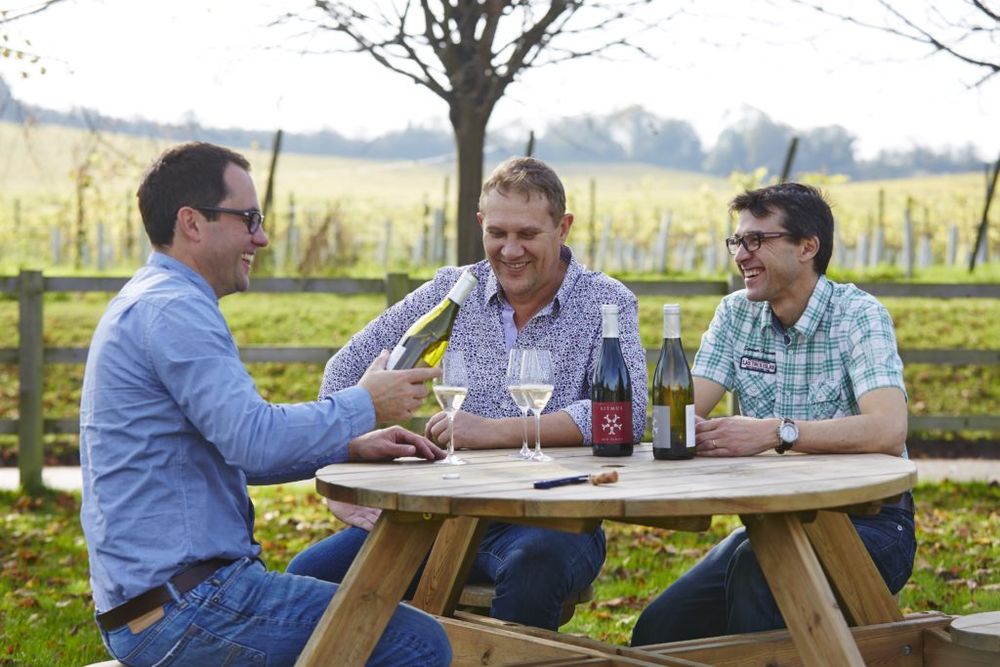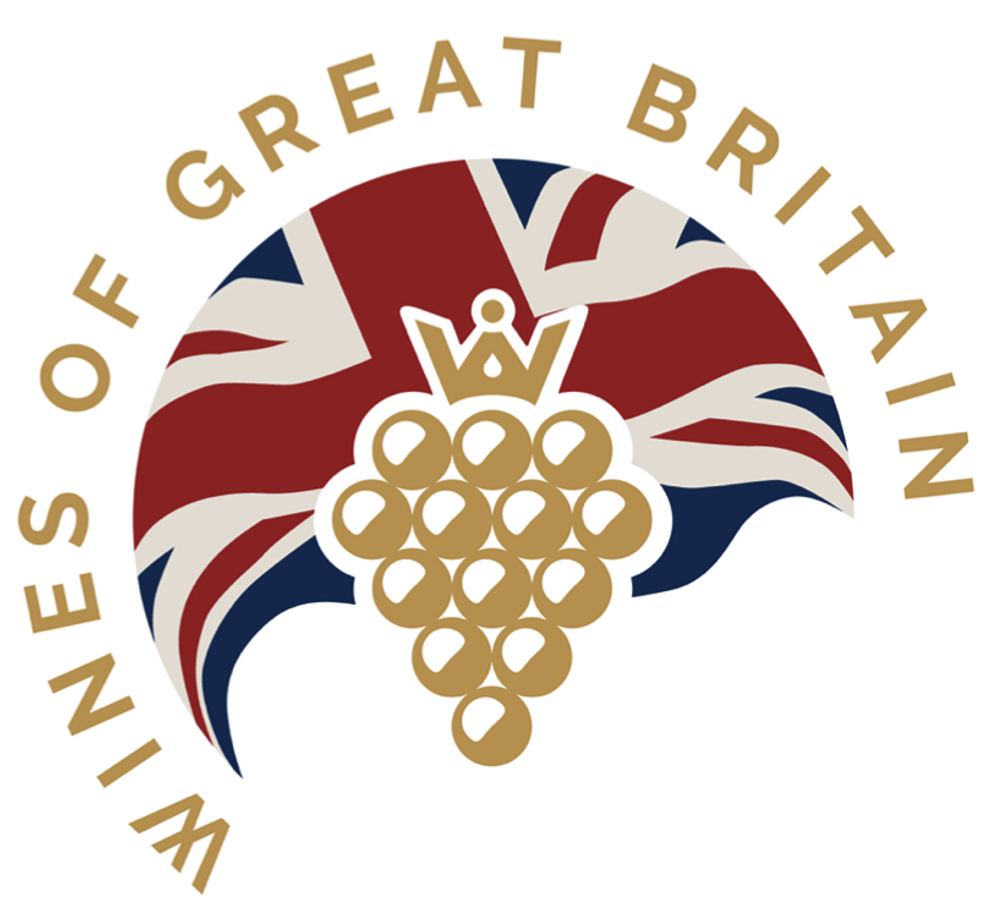From introducing new wines to capture more of the mainstream market, to pushing finer wines into the premium on-trade, there was much to debate at Bibendum’s industry debate on English wine.
To say the penny has dropped about English wine would be one of the understatements of the year. In fact such is the interest in and demand for English wine that all the noise and press statements around the sector is no longer about the wines that have been already been made, but quite how much we can expect to see in the market in five, 10 and 15 years and beyond.
Considering how long English wine has been trundling along in the inside lane of the wine world it is quite staggering to now see the scale of growth that the industry is forecasting to grow in the near, medium and long term.
Try on these figures for size:
- there are now over 500 commercial vineyards in Great Britain.
- the area under vine in England and Wales has increased 194% in the last 10 years to reach 2,888 hectares.
- a further 3m vines will be planted in 2019, on top of the 1.6m in 2018 and 1m in 2017.
- all of which is seeing a boom in production, up from 5m bottles in 2015, 5.9m in 2017 to a record 15.6m in 2018, with Wine GB predicting it will be 40m bottles by 2040.

Up to 3m extra vines are being planted this year alone in England
On the face of it all seems fine and dandy in the country garden of English wine. But for all the fast growing vines, there are also a fair few thorns and nettles to look out for as well. It is one thing planning for the future and making ambitious plans for expected much bigger volumes, it is another achieving them.
Supply and demand
Even if the industry does reach its production goals, you then need more wineries to turn the grapes into wine and you have the issue of market dynamics and having so much more wine available to buy and sell. Whilst English wine has made its name to date pushing a premium, if not super premium message, there will be enormous pressures to drop prices if we end up with a glut in the market.
These were the issues that faced a panel of leading names in the English wine industry who came together to take part in a trade debate hosted by Bibendum, one of the biggest suppliers of English wine to the on-trade, at its offices last month.
It made for a fascinating discussion for we are clearly at a crossroads in what is English wine’s relatively short history as a serious producer of wine in its own right.
The panel
Taking part were:

John Worontschak
- John Graves, on-trade director at Bibendum, that has seven English wine producers in its range.
- John Worontschak, co-founder of Litmus Wines, based at Denbies in Surrey.
- Tom Surgey, sales director, Ridgeview in Sussex.
- Dan Cahill, managing director, Divergent Drinks, which claims to be the first to introduce a Charmat style of English wine into the UK market.
- John Mobbs, founder of GreatBritishWine.com.
John Worontschak, who through Litmus Wines makes wine for a number of major retailers as well as Denbies, kicked off the debate by likening the English wine industry to a boxer that “was punching well above its weight”.
John Graves said you can see the breakthrough that has happened in English wine in the response and interest it was now seeing in the trade, with Bibendum’s own sales of English sparkling wines increasing 34% year on year. He could not imagine, for example, a few years ago that he would be able to work with The Ivy Collection, arguably one of the most influential restaurant groups in the country, and introduce a special wine list of English wines by the glass to its list to help support the recent English Wine Week. Not just for aweek either. But for an entire month. A move that would have been unheard even five years ago, he added.

The Ivy Collection worked with Bibendum during the recent English Wine Week to offer a special selection of wines by the glass
“Now that’s unprecedented. It’s game changing. The fact The Ivy has done that is massive for the rest of the sector,” explained Graves.
“English wine is now a really important part of our portfolio and we’ve taken on two new producers in the last year” said Graves. “There has been a huge change in the last three years. You can really feel it in the trade. It’s no longer just a gesture listing an English wine. It’s seen as a key margin driver and that’s a big difference.”
But there is now a real need, he says, for the industry to grasp this opportunity. To really come together and make the most of this new opportunity.
Tom Surgey at Ridgeview agreed. The last three years, he says, has been pivotal in changing the dial and moving perceptions about English wine both at home, but particularly around the world. For a start, the UK no longer has to make a case for its wines. The fact English sparkling wine is amongst some of the best in the world is now indisputable, he claimed.
Instead producers can now spend all their time promoting, educating and spreading the word about the wines they and the industry produces. “We are now starting to see the quality with still wines as well,” he added.

Tom Surgey of Ridgeview is one of the biggest voices about English wine in its industry. Picture Deborah McKenna
New talent
It’s not just the quality of the wine that has grown exponentially, but the skills and talents there now are in the industry, continued Surgey. The English wine sector is attracting top talent at all levels, particularly at a sales level, which ultimately is what any new sector is all about.
“In the past when we have had demand, we have struggled to get traction with distributors to make the most of it. The full team has to come to the table. Making great wine is only half the battle. You need good people out in the market to sell it,” he explained.
It seems the partnership with Bibendum, that started in 2016. is working for both sides. Graves said it is important for distributors like itself to make sure the right wines are being sold in the best places.
Coping with change
One of the issues any fast changing industry faces is how it keeps up with the pace of change that is taking place within it. Like newcomers to the sector who don’t want to do the tried, tested and approved of, but actually shake things up and follow their own course of action.
Like Dan Cahill at Divergent Drinks. After a number of years sourcing and supplying major retailers with organic, fresh citrus fruit juice from around the world, Cahill thought he would look at new opportunities in English wine.
Rather than simply come to the market with yet another sparkling wine, he decided to look at something very different. A Charmat-style sparkling wine called Fitz. “I was astounded when I looked that there was this gap in the market,” he said.

Fitz claims to be the first Charmat style English wine
He also looked to position his brand more in the middle of the market and offer an English fizz alternative one step down from premium. “We needed to find our own niche.”
But he soon ran into problems when he wanted to call it English sparkling wine as only wines made in the traditional Champagne method can be called that according to Wine GB.
Hence Fitz is known only as a sparkling wine “made in England”. But it is not keeping customers away from stocking it. You can find Fitz for £8 a glass at The Ivy or £57 a bottle. Largely because, said Cahill, it is not working with traditional Champagne varieties, but those that give higher yields.
Appealing to mainstream consumers
Cahill believes its Fitz brand can appeal to a whole new consumer for English wine. In retail he is looking to sell at £17.99 down to £15 on shelf. He believes the kind of consumer that seeks out products like craft beer are tailor made to try Fitz.
“We need to keep on bringing new ideas to the market. Some will work better than others. But we have to look to create new opportunities and focus on getting our own message right,” he explained.
He has also started out with a business model that can be quickly scaled up to cope with demand for bigger volumes. For a start it does not own any vineyards and buys in grapes as he needs them.

Fitz is looking to open up English wine to people who may not normally give it a go
Worontschak praised Cahill for giving Charmat a go and felt there was certainly a price position to go for that sits just above premium Prosecco. He said Denbies is also looking to build brands and wines in that £15 to £20 market. “We are seeing more sparkling products like this in the market,” he added.
Surgey said if all those wines are being made with the right method for those price points, the industry should get behind them. “We want to be seen as having good value at every price point. Providing each wine is authentic and real.”
“Having a route to market is key. The danger with all these vines being planted is that people are not going to have that,” warned Worontschok. “We are already in a position when supermarkets are asking us to do a promotion and we are saying ‘no’”.
Graves agreed: “It’s about integrity.”
Wines at all prices
Cahill believes any healthy industry that wants to have long term success needs to have options at each price level. Just pushing premium can only take English wine so far, he stressed.
Surgey welcomed Cahill’s innovation, but said it would be simply was not possible for Ridgeview, with its vines, location and business model to produce a “commercially sustainable” wine for less than £30.
“But we are still a young wine industry so it is only natural that we should be experimenting at different price positions,” he added. “You just have to be realistic about you can make.’
He also saw Charmat as an “exciting” wine that can offer a good English alternative to cool climate, aromatic whites.
“We should be looking at different drinking occasions for English sparkling wine,” added Surgey. “Prosecco has been a great gateway into drinking sparkling wine midweek. We need to be clearer with our communications about what English sparkling wine is.”

John Mobbs welcomes more wines than can open up the English wine market to more drinkers
John Mobbs at GreatBritishWine.com saw Charmat as potentially being the “access point” for English sparkling wine. “I can definitely see it growing and developing and become popular with consumers.”
Managing supply and demand
Whilst the panel members welcomed the idea of planting more vines, they were equally cautious about how many and by when. Surgey said one of the biggest issues will be whether there will be enough wineries capable of handling all the fruit being produced.
Even at Ridegview in big production years, like last year, it has had to turn away growers and their grapes. “We had to turn down six tonnes last year. It was heartbreaking.”
Worontschak said the England wine industry has the opportunity to learn from the problems that New World countries, particularly Australia and New Zealand, have had in producing too much wine.
One solution will clearly be to export more English wine. But that is not as simple as it sounds, warned Surgey. Although Ridgeview is one of the more successful exporting English producers, accounting for around 20% of its production.

The team at Litmus Wines that makes private label English wine for most of the major multiples
Controlling the premium message
The panel felt there was more that Wine GB, the governing body of English wine, could do, particularly around pushing an overall quality and premium message. But appreciate it had an issue over funding. Unsure whether we should go in so strongly with this message
Graves said there was still much for the English industry to learn from Champagne.
“It does not matter how much Champagne Lidl sells at £10. Champagne overall has kept that Grande Marque status,” added Graves. “You have to get your message right. But who is doing it? You have to protect your status.”
He urged the major English wine producers to do more. In much the same way that the top English football teams have taken control of their own destiny and created the Premier League. Rather than leave it all to the Football Association. There is a similar situation emerging in English wine with the top producing players and Wine GB. This needs to happen, argued Graves, on both a regional and national level.
Surgey said it does happen to some extent with the main 10 producers who are involved in exports, where they have come together and helped invest in joint promotion activities overseas. Particularly in the US with joint campaigns in major cities like New York, Los Angeles and Austin.
They are also in September hosting a joint buyer and influencer trip from the US to come and visit the producers in the UK and experience English wine for themselves.
Worontshok said the industry also has to look at yield and production levels and where possible push average yields of four to five tonnes per hectare up to closer to seven or eight tonnes.

There are both enormous opportunities for WineGB, English wine’s governing body, but it also faces huge challenges to in order to make the most of them, said the panel
On-trade opportunity
The panel also agreed the on-trade is still a largely missed opportunity for English wine. “We have not touched the sides,” is how Surgey put it. “Most restaurants that do have an English wine only have one. We need them to be stocking five or more,” he claimed.
It had certainly been one of the big priority areas for Bibendum in the last year, stressed Graves.
Having the support of the major national on-trade drinks distributors, like Bibendum, is a big step change for the industry, said Surgey. “None of this would be possible without the support of a dynamic partner like Bibendum. If they don’t see the potential in all this then it is very hard.”
Can English wine convince more restaurants to take one or two Champagnes off their lists and replace them with English wine? That’s the collective challenge for the industry, said Surgey. Particularly with all this extra production coming down the line.
He conceded English producers don’t have the budgets to compare with what a Champagne house can offer to list its wines. But they must think of other ways to be able to tender for those contracts and opportunities.

Graves said Bibendum had made English wine one of its major priorities this year and it was proving to be a major success with its customers – with sales up 35% year on year
Building on momentum
It is ultimately all about momentum, agreed the panel. All these steps help the overall Image of English wine. It’s why Denbies, said Worontschak, is now getting over 300,000 people coming for tours and its restaurants and Ridgeview is selling 7% of its wines at the cellar door.
“We are now starting to see really good brands in English wine. Brands that then help customers decide which style of English wine they like,” added Surgey.
The next step will then be promoting what Graves calls a producer’s “halo” wine. Wines that are only made in a certain vintage that express the very best they can do.
“That will help raise the category to another level again,” he said. That’s what will really help distributors,” claimed Graves. “When we took on Kit’s Coty from Chapel Down we had so much interest from sommeliers.”

Graves said wines like Kit’s Coty from Chapel Down were helping to create iconic labels for the trade and buyers and sommeliers to aspire to
But it is also important, stressed Graves, to put English wine in the right context to the rest of the world. “It is still in its infancy. We are still having to control what listings we have so that we don’t run away with stock. Particularly by the glass.”
Opportunities for still
The still wine market for English wine is less developed and as established in the trade as sparkling, but things are changing fast. It is also a lot more polarised between supermarket own label driven wines at one end, between £9-£13, and finer wines at £30-£35 at the other, said Worontschak.
The challenge, though, with still is where sparkling was a few years ago. “Where do we place these wines?” asked Graves. “At those price points on a restaurant list people want the French classics.”
Mobbs said this might be where different grape varieties, particularly the traditional German varieties that have done so well in England, might find their place.
Then there is the big Bacchus opportunity in still wine. For many in the English wine sector, Bacchus is the grape variety that can be the country’s big point of difference. Surgey pointed out that of the 3m new vines being planted, Bacchus was the fourth biggest variety behind Chardonnay, Pinot Noir and Pinot Meunier.

English wine is now a major tourism opportunity like here at Ridgeview: photo ©Julia Claxton
Mobbs believes Bacchus has a great future as it makes the light, engaging, refreshing wines that people want to drink. “We are also seeing some great Chardonnays and white Pinots. We need to have more confidence in these wines,” he said.
Worontschak said it is vital for the future of English wine that still wine finds its place. That’s where it will get its sense of place. “Sparkling wine is more about production than terroir,” he admitted.
It will certainly help make sure producers are growing the right grapes in the right regions, said Surgey.
For now it is the go to choice for supermarkets to make their own still wine, said Worontschak. And where, no doubt, so much of the extra volumes of wine being produced will end up.
“All of Denbies still wine is sold out on allocation. Such is the demand we have,” claimed Worontschak.
Graves said it was vital the industry really collectively grabs the opportunity there is now for English wine and it does not allow the momentum “to fizzle out”. It is the ideal wine country for Bibendum to work with as it can so easily take its customers out to the people making the wines. “It helps take away any perceptions they have. We can get them out to the wineries so they can really understand it. You can’t underestimate that. English wine has so many plus points,” said Graves.
A wine success story that is literally on our own doorstep.










































